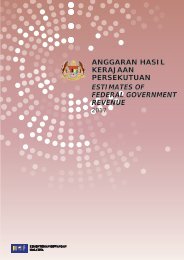WEALTH
2c0esX1
2c0esX1
Create successful ePaper yourself
Turn your PDF publications into a flip-book with our unique Google optimized e-Paper software.
FOCUS<br />
tourism exists, but has not been developed fully. He points<br />
out that in the late 1990s, 9% of Bumrungrad revenues<br />
came from overseas: this is now at 56%. “Medical tourism is<br />
real, so the opportunity is there,” he says. And while he<br />
admits that national figures are possibly inflated, he<br />
asserts that, “until 2010, when I left the hospital, our<br />
international numbers were counted as either one<br />
outpatient visit or one admission.”<br />
NOT TO BE DETERRED<br />
Malaysia, India and South Korea have long since followed<br />
Thailand’s lead, while Cambodia is billing itself as the lowcost,<br />
high-quality dental care destination. According to the<br />
World Health Organization, there are 50 countries<br />
throughout the world involved in medical tourism, with<br />
India, Singapore and Thailand in the lead and comprising<br />
90% of the fragmented Asian medical tourism market.<br />
Steve Conway, the Singapore-based regional general<br />
manager with Allianz Worldwide Care, a provider of<br />
international health insurance, says that insurance<br />
companies could drive this. “Insurance premiums<br />
currently increase from 6–15% per year. Opportunities<br />
in medical tourism are one way for insurers to keep costs<br />
at bay.”<br />
One tale he cites to illustrate this is of a Shanghai client<br />
who needed anterior cruciate ligament treatment. The<br />
local hospital wanted $58,000, but the reasonable cost at<br />
location assessed it at $40,000, which left the client facing<br />
out-of-pocket costs of $18,000. Alternatively, a Bangkok<br />
center offered two business-class tickets, surgery and<br />
ten days’ accommodation all for $18,000, which the<br />
insurance company would completely cover. “You can<br />
imagine which way he went,” says Conway. “It was a winwin<br />
for all involved.”<br />
Conway notes that many of the medical tourists in<br />
Southeast Asia come from developing countries within the<br />
Asian region, where economies have created wealth but<br />
high-quality health infrastructure is lagging. Indonesians<br />
are said to spend $11.5 billion a year on healthcare abroad,<br />
much of it in Malaysia, which adheres to halal restrictions<br />
such as avoiding pork derivatives in medicine. Meanwhile,<br />
the Laos, Cambodians and Vietnamese prefer Thailand,<br />
while the Chinese go to Singapore or Thailand for care that<br />
is not readily available at home.<br />
Cultural similarity is an important consideration, says<br />
Conway, but the big headline is a flight to quality, as people<br />
seek access to medication, care and cutting-edge<br />
technology. “While tourists from the West may be after<br />
cosmetic surgery,” he comments, “for patients from China,<br />
medical tourism can be a high-quality solution – and this<br />
is unlikely to change any time soon.”<br />
TURKISH TRANSFERS<br />
Far west of Thailand, Turkey is seen as an up-andcoming<br />
country for medical tourism. The Health<br />
Ministry is hoping to increase visitor numbers to<br />
2 million by 2023. Many of the patients come from<br />
lraq and Libya, but expatriates returning from<br />
Germany also make a sizeable section of the<br />
business.<br />
Allianz Turkey is seeking to improve cross-country<br />
medical insurance. “Many Turkish guest workers in<br />
Germany spend their holidays back home. Merging<br />
our contracts with those of Allianz Germany could<br />
reduce the cost both for them and us when tourists<br />
seek treatment in Turkey,” says Oktay Atay, head of<br />
health claims, health provision and provider network<br />
management with Allianz Turkey.<br />
MEDICAL INSURANCE WHILE IN THAILAND<br />
Allianz Global Assistance (AGA) is seeking regulatory<br />
approval to insure non-Thai patients against<br />
unexpected complications such as hematoma, and<br />
internal and external infections while being treated<br />
in Thailand. Estimating 900,000 medical tourists<br />
annually, AGA Thailand CEO Steve Watkins hopes to<br />
win close to 500,000 of them as clients over the<br />
mid- to long-term.<br />
Allianz • 25



